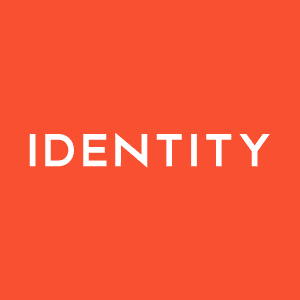10 Digital Marketing Predictions for 2016
What can brands expect from digital marketing in 2016? While some platforms will go from strength-to-strength, others will face increasing pressure to define their identity. New tools and products will empower businesses to better service their customers, and savvy marketers will work behind-the-scenes to maximise return on investment. The world will become even more mobile, and one often overlooked marketing stalwart will continue to reign supreme.
Here are Identity’s 10 digital marketing predictions for 2016.
1. Facebook Closes In On 2 Billion Users Worldwide
Facebook’s fourth quarter (Q4) 2015 earnings report isn’t due until the end of this month, but if the company matches its Q3 growth Facebook should have reached approximately 1.6 billion active users by the end of December. This represents year-on-year growth of 207 million users. Lest you scoff, that’s 25% better than the 165 million users Facebook added in 2014. And more than Twitter has added in the last 4 years. Bottom line: don’t believe the naysayers. Facebook is not slowing down. People are not losing interest. Facebook growth is accelerating. Indeed, Facebook has now become the “telephone” of social media. It may not seem as exciting or innovative as before, but essentially everybody uses it. Even people who say they don’t like it still use it. It’s become second nature for the majority of internet users, and not being on Facebook – both as an individual and a business – is being seen as increasingly unusual. More importantly, Facebook’s social graph is now so rich that every group you can think of, no matter how niche, can be targeted (and re-targeted) in their tens of thousands via Facebook’s ad platform.
Accordingly, we expect Facebook to add another 150-250 million active users in 2016, reaching 1.75 to 1.85 billion by the end of the year, and then passing the 2 billion active user mark by the summer of 2017.
Note: It’s a long shot, but if China reverses its ban on Facebook to the entire population in the next 12 months (currently Facebook is only available within a 17-mile free-trade zone in Shanghai) expect that 2 billion user tally to be reached a lot sooner.
2. ALL BUSINESSES WILL HAVE TO PAY TO PLAY ON SOCIAL MEDIA
This has been increasingly true for a couple of years now but in 2016 it will be imperative that any business using social media will need to support their strategy with a paid advertising campaign to compete, both with competitors and for attention from prospects and customers. Quite simply, organic growth across all of social media – but particularly on Facebook and Twitter – is practically non-existent. Organic reach on Facebook Pages declined from 100% in 2007 to just 6% in 2014, and this number could reach as low as 2-3% this year. So does that mean Facebook is a waste of time? Far from it – it’s the single most important digital marketing tool on the planet. But like any other professional service, to get the best results you will need to allocate some budget. The same is true of Twitter. In that regard this is no different than using any other marketing medium, and businesses in 2016 (and beyond) will need to quickly recognise that fact to avoid wasting time and internal resources on hoping to get a return from a purely organic strategy.
3. TWITTER’S IDENTITY CRISIS DEEPENS
What is Twitter? That’s a question that has perplexed almost a billion people since the platform first launched to the public in 2007. Twitter has racked up 320 million monthly active users in that time, but more than three times that amount have tried the service and not stuck around. If Twitter had retained those users the company wouldn’t be much smaller than Facebook – as it is, it’s about one-fifth of the size. An apples and oranges comparison, perhaps. After all, Twitter isn’t Facebook. But, to ask again, what is it? To some users, Twitter is a simple communications platform. To others, it’s their primary source of breaking news. Some use Twitter to keep tabs on favourite celebrities; others as a read-only information feed. For some brands, Twitter is the preferred social network for all aspects of their business. For others, it’s a customer support tool – and nothing more.
Twitter, of course, doesn’t have to be any one thing. In many ways it’s what you make it. But as an entity and organisation, Twitter has always suffered from a clear lack of identity. The founders and leadership team have always struggled to define what Twitter is, certainly in a way that makes sense to the masses. Even the company’s official “What is Twitter?” page doesn’t attempt a definition. In the past it’s been pitched as everything from a media company to a communications tool to a news platform. One week the company is launching a (failed) music product, the next it’s talking about its pivotal relationship with TV. In the past few years Twitter has acquired both Vine and Periscope – both of which have proven to be very popular, but neither has any viable commercial value, certainly not at the moment.
Accordingly, 2016 will see Twitter further start to question its identity and place within the digital infrastructure. There’s been a lot of speculation that they’re considering dropping perhaps the one thing that most closely defines the brand and product – the 140-character limit – and while many are pushing for this we believe it will be a huge mistake and most likely damage the platform’s reputation beyond repair. Indeed, if Twitter makes more than a couple of missteps in the first half of 2016 and the user base grinds to a halt (and the stock continues to thank), don’t be surprised if one or two buyers emerge over the course of this year.
4. GROWTH OF REAL-TIME SOCIAL MEDIA
Real-time social media is nothing new – broadcasters have been “turning to Twitter” to gauge the reaction of current events for years. But actually publishing in real-time has proven problematic – there’s only so many tweets you can write before exhausting both your resources, and your audience.
In 2016, thanks to platforms such as Periscope and Snapchat, as well as Facebook’s Live tool, real-time video broadcasting will change the game for the most innovative brands (and individuals) using social media. The catch: it requires considerable resources, certainly to do it well. But for the brave and the bold, using these tools to provide real-time, video updates in product launches, events, news and customer service – or just to stay connected, 24/7 – will quickly elevate them above competitors. And it isn’t always about producing award-winning coverage – businesses that aren’t afraid to risk an occasional “warts and all” approach (i.e., putting the “real” in “real-time”) could be the ones that ultimately reap the spoils.
5. VIDEO UPTREND CONTINUES
Video’s importance will transcend beyond real-time social media marketing in 2016. Last year Facebook leap-frogged YouTube as the dominant online video platform, boasting 8 billion daily views in November (which incredibly doubled from 4 billion daily views in April). YouTube doesn’t report on daily views, but third party estimates put it at around 7 billion. Still wet-behind-the-ears Snapchat was good for 6 billion daily video views in November, too. That’s tripled from 2 billion in May. What does all of this mean? Well, first, while YouTube remains the most important video platform – it’s the second biggest search engine after Google (who also own YouTube) – in terms of numbers of eyeballs reached it’s fallen into second place behind Facebook and will likely be caught and passed by Snapchat early this year, too (who could also move above Facebook). But, more importantly, second, collectively the online video uptrend saw huge growth last year and this is expected to continue throughout 2016, too.
On the horizon: video ads showing up in Google search results, on Snapchat and on Instagram, the possibility of a Facebook Video spinoff product (after all, Facebook might lead in video views, but it does a terrible job of managing them for the end user – a Messenger-like spinoff makes sense) and more and more brands hiring full-time video marketing specialists and producers to maximise their return.
6. MOBILE, MOBILE, MOBILE
It seems like every year for a decade now the growth of mobile has been included in every top ten list of predictions for the year to come. And 2016 is no exception – if anything, this is the year when the business world goes predominately mobile.
The tipping point has already been passed. Globally, there are more mobile users than desktop users. 80% of internet users own a smartphone. The average person spends more time each day on their mobile device than they do their desktop. Seven out of ten emails are opened first on a mobile device. Tablets account for the highest add-to-cart rates on ecommerce websites.
Even mobile advertising expenditure has now surpassed desktop.
Accordingly, a growing number of digital technologies and platforms will be mobile-first or mobile-only, with the desktop a poorer experience by comparison (Instagram has essentially led the way here, followed by Snapchat, Vine, Periscope and other social platforms).
Brands must think mobile-first in 2016. Not convinced? 61% of users won’t return to a website after a poor mobile experience, and 40% will visit a competitor site, instead. And that comes directly from Google.
7. SOCIAL MARKETING BECOMES LESS FRONT-FACING
As organic social media declines in value, and existing fans and followers become increasingly picky about seeing too many marketing posts, brands will be moving behind-the-scenes to target new prospects and focused groups of consumers to maximise their return. This “dark social” media is nothing new, but it will come into its own in 2016, with front-facing social media essentially becoming a by-the-numbers exercise (i.e., maintenance). Savvy brands will implement a plethora of PPC campaigns to attract new customers with loss-leaders and heavily incentivised offers, while existing customers can be targeted separately with loyalty perks. And because it’s behind-the-scenes, and you won’t have to worry about annoying fans and negative posts on your social pages, it’s going to get really aggressive, too.
8. BETTER CUSTOMER SUPPORT TOOLS
Social media has revolutionised many industries but it’s perhaps the business of customer support that has seen the greatest benefit. And it is a business – for many retailers it’s a core part of everything that they do – and as such the larger platforms will start to implement specific tools to help brands manage this workflow.
Facebook has already initiated this with an improvement to its Messages tool on Pages, but it’s still limited. And while third party platforms such as Zendesk allow the incorporation of social media into their customer support systems, Facebook (and others) will look to assume control of this position by implementing better functionality and management facilities into their backend (including richer automated responding).
It’s timely, too – two-thirds of consumers have reached out to a company’s social media presence for servicing, and it’s imperative that brands are allowed to deliver a first-class support experience. After all, it’s not just that one customer who’s watching for your response – it’s all of their friends, too.
9. INSTAGRAM BECOMES A PROPER MARKETING PLATFORM
Instagram has the best organic reach and growth potential of all the major social networks. Even profiles with very low numbers of followers can reach a lot of eyeballs with an intelligent hashtag and tagging strategy in their posts. But beyond this, Instagram remains frustratingly limited as a marketing tool for brands. Sure, if you’re one of the countries privileged enough to have been granted access, Instagram ads can be fruitful. But Facebook acquired Instagram almost 4 years ago, and while it’s somewhat to the parent company’s credit that they’ve left it alone, it’s time for Facebook to implement tools, features and functionality that make Instagram an asset for businesses. Like what? Clickable images, for starters. Don’t just limit those to ads – launch business accounts and let businesses attach links to their photos. Grant multi-user, multi-level access to these business accounts (much like Facebook’s Roles access) – it’s unbelievable that it’s 2016 and you still have to give someone your IG password to let them access your account – and allow multiple profiles to be managed from the Instagram app, too. Improve the experience on the web – if only on the publishing side – and throw in some decent, internal analytics, too. That’s just a start, but it would make Instagram, which reached 400 million active users in 2015, arguably the number one digital marketing platform for B2C brands overnight.
Some of this will happen this year – the jury’s still out on how far Facebook is prepared to let its younger sibling become an actual competitor.
10. EMAIL REMAINS THE KING FOR CUSTOMER ACQUISITION
The digital marketing space shifts constantly, year-after-year, but if there’s one truism that holds strong it’s this: email is here to stay.
Email is still better for customer acquisition than anything else in digital marketing. Social media is a richer tool for getting attention and raising awareness, and often for the acquisition of leads, but email is better for acquiring customers. Search might have an edge for generating enquiries, but email will help you finalise the deal.
Skeptical? A Direct Marketing Association (DMA) study found that two-thirds of consumers had gone on to make a purchase online as a direct result of an email marketing message, and a 2015 study found that more than seven in ten (72%) of consumers say that email is their preferred method of communication with the companies that they do business with.
Email is mobile friendly (and mobile-first). It syncs seamlessly with other marketing platforms and strategies. It’s familiar and simple for all consumers. When they opt-in, people actually like getting emails.
Most importantly, email offers an incredible return on investment, with the DMA placing it at £38 for every £1 spent, up 53% from a year ago. Expect this number to continue to rise in 2016, with email maintaining its position as the most important digital marketing tool for getting customers to sign the dotted line.
CONCLUSION
The digital marketing space will continue to evolve in 2016 and it’s now essential that businesses of all sizes across every industry have a digital-forward strategy for their organisation. This includes an active presence on social media, an innovative social marketing strategy, a mobile-led website, strong video content and an email marketing funnel. Contact Identity today to learn how we can help with your digital marketing campaigns for 2016 and beyond.








